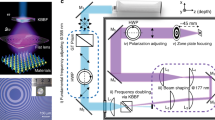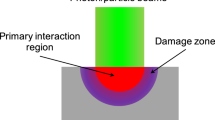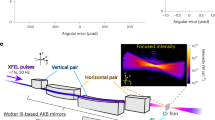Abstract
J. Strong and E. Gaviola1 described the preparation of optical aspherics by vacuum evaporation. They used layers of aluminium to parabolize mirrors, but found that with thickness greater than 5λ the coating began to show a bloom and scatter light. Apparatus for the production of refracting elements by this method was described by L. G. Schulz2; Schulz used lithium fluoride and was able to produce aspheric films giving a retardation [ (n − 1)t] of up to 2.5λ. At that thickness the films began to peel off. The retardation could be doubled by covering the lithium fluoride film with a layer of collodion and evaporating on to this another layer of lithium fluoride.
This is a preview of subscription content, access via your institution
Access options
Subscribe to this journal
Receive 51 print issues and online access
$199.00 per year
only $3.90 per issue
Buy this article
- Purchase on Springer Link
- Instant access to full article PDF
Prices may be subject to local taxes which are calculated during checkout
Similar content being viewed by others
References
J. Opt. Soc. Amer., 26, 153 (1936).
J. Opt. Soc. Amer., 38, 432 (1948).
Author information
Authors and Affiliations
Rights and permissions
About this article
Cite this article
DOBROWOLSKI, J., WEINSTEIN, W. Optical Aspherizing by Vacuum Evaporation. Nature 175, 646–647 (1955). https://doi.org/10.1038/175646b0
Issue Date:
DOI: https://doi.org/10.1038/175646b0
This article is cited by
-
Making aspherical lens by thin film deposition coated under vacuum
Journal of Optics (2018)
-
On the preparation of high reflectance aspherical mirrors by thin-film deposition
Optical and Quantum Electronics (1996)
Comments
By submitting a comment you agree to abide by our Terms and Community Guidelines. If you find something abusive or that does not comply with our terms or guidelines please flag it as inappropriate.



